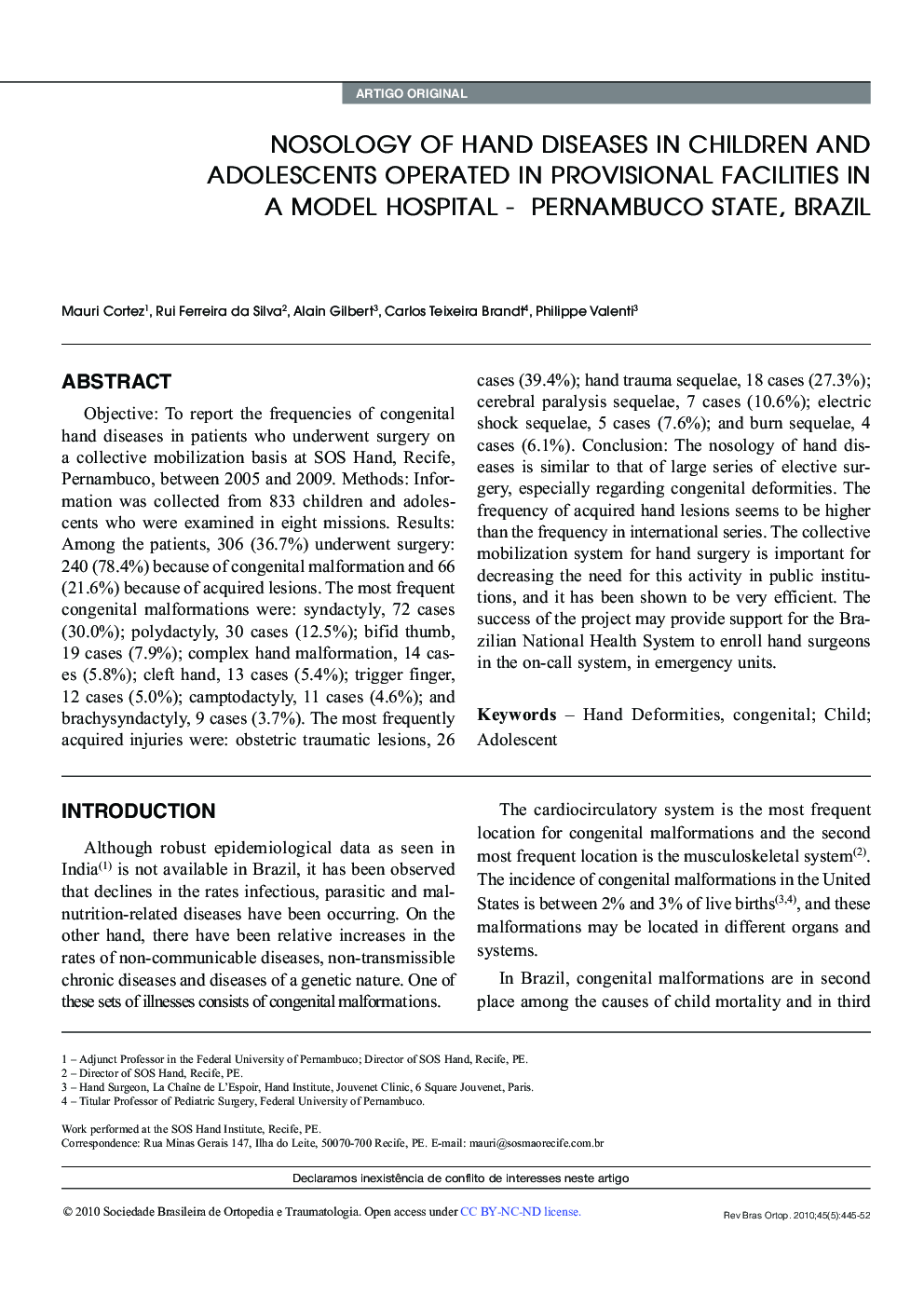| Article ID | Journal | Published Year | Pages | File Type |
|---|---|---|---|---|
| 2708764 | Revista Brasileira de Ortopedia (English Edition) | 2010 | 8 Pages |
ABSTRACTTo report the frequencies of congenital hand diseases in patients who underwent surgery on a collective mobilization basis at SOS Hand, Recife, Pernambuco, between 2005 and 2009. Methods: Information was collected from 833 children and adolescents who were examined in eight missions. Results: Among the patients, 306 (36.7%) underwent surgery: 240 (78.4%) because of congenital malformation and 66 (21.6%) because of acquired lesions. The most frequent congenital malformations were: syndactyly, 72 cases (30.0%); polydactyly, 30 cases (12.5%); bifid thumb, 19 cases (7.9%); complex hand malformation, 14 cases (5.8%); cleft hand, 13 cases (5.4%); trigger finger, 12 cases (5.0%); camptodactyly, 11 cases (4.6%); and brachysyndactyly, 9 cases (3.7%). The most frequently acquired injuries were: obstetric traumatic lesions, 26 cases (39.4%); hand trauma sequelae, 18 cases (27.3%); cerebral paralysis sequelae, 7 cases (10.6%); electric shock sequelae, 5 cases (7.6%); and burn sequelae, 4 cases (6.1%). Conclusion: The nosology of hand diseases is similar to that of large series of elective surgery, especially regarding congenital deformities. The frequency of acquired hand lesions seems to be higher than the frequency in international series. The collective mobilization system for hand surgery is important for decreasing the need for this activity in public institutions, and it has been shown to be very efficient. The success of the project may provide support for the Brazilian National Health System to enroll hand surgeons in the on-call system, in emergency units.
